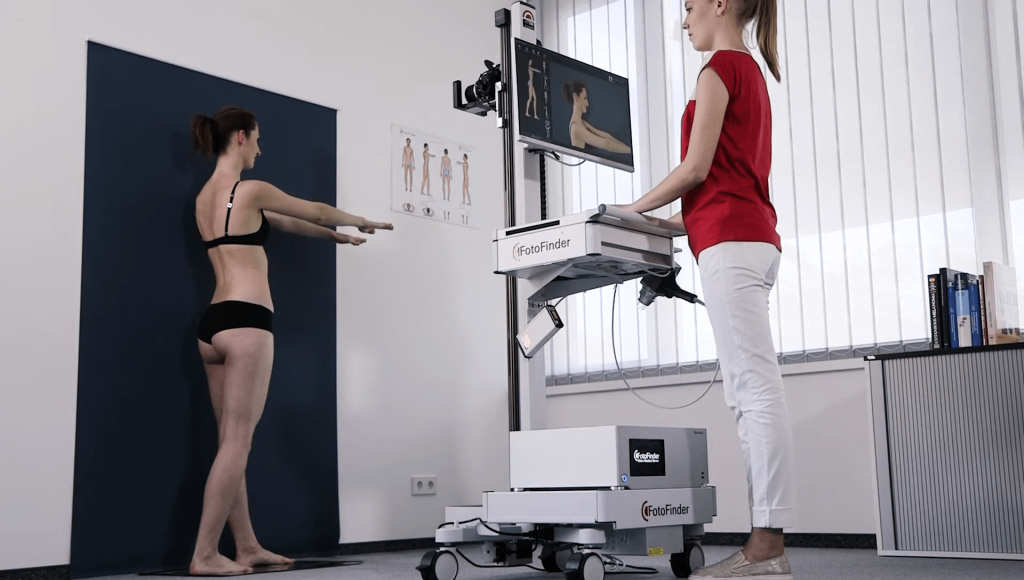Calls for Ukraine
Calls for Europe
Calls for USA

The possibility of using 3D photography to improve early diagnosis of melanoma is gaining interest in the medical community.
With the increasing incidence of skin cancer worldwide, there is a need to develop better and more effective diagnostic tools. One such tool is whole-body 3D photography, in which a machine equipped with 92 cameras takes a complete picture of the skin surface. This method has the potential to significantly improve the detection of melanoma and other skin cancers, especially in high-risk groups.
In a first-of-its-kind study, experts examined the potential advantages and disadvantages of adding 3D imaging to routine skin cancer screenings.
The randomized controlled trial compared the effectiveness of whole-body 3D imaging when added to routine skin exams that people were already undergoing.
Researchers followed 315 high-risk patients for 2 years and studied how the technology worked in a teledermatology setting, where a dermatologist views the images remotely.
Patients in the intervention group underwent whole-body 3D imaging in Brisbane, which created a digital 3D avatar of their skin surface. Detected lesions were added to their profile. A senior dermatologist remotely reviewed these images and referred suspicious lesions to the patient’s primary care physician for further treatment.
Teledermatology is becoming an important tool for remote patient monitoring, and it was important for the scientists to see if the new technology could fit into this model to improve treatment outcomes.
What the study showed
By introducing whole-body 3D imaging as an adjunct to conventional treatment, it is important to ensure that patients in both the control and intervention groups have access to traditional, reliable methods of skin cancer monitoring.
Non-melanoma skin cancer
Patients who underwent 3D imaging in addition to regular skin exams had more cases of non-melanoma skin cancers, such as basal cell and squamous cell carcinomas, than patients in the intervention group.
This was not quite what the researchers expected, but upon further analysis, they concluded that the improved technology meant that more medical professionals (including young doctors and teledermatologists) analyzed the images in addition to routine medical follow-up, leading to the detection of more lesions.
3D imaging technology allows medical professionals to monitor the occurrence of new moles or any changes in size or color over time. If changes are present, doctors tend to be cautious and recommend excision.
Melanoma
Interestingly, despite the increased number of excisions, the researchers saw no significant difference in the number of melanomas detected between the intervention group and the control group.
There may be concerns that this additional technology could lead to overdiagnosis and more skin surgeries, but it is important to note that the percentage of benign and malignant lesions removed was similar between the intervention and control groups.
This means that whole-body 3D imaging did not necessarily lead to an increase in misdiagnoses, but allowed for more thorough examinations and the detection of more skin cancers.
What this means for future skin cancer screenings
The results of this study suggest that although whole-body 3D imaging may be useful in identifying more suspicious lesions, more research is needed on its role in the diagnostic process.
We now have valuable insights into the use of 3D imaging in teledermatology. Further studies are needed before whole-body 3D imaging is widely recommended as part of routine skin cancer screening. These further studies include longer and larger clinical trials, as well as studies involving large and diverse populations. This study also opens the door to explore the role of artificial intelligence (AI) in skin cancer monitoring and treatment.
AI has the potential to improve skin cancer screening by automatically identifying suspicious neoplasms, tracking changes over time, and helping doctors prioritize the highest-risk cases. The use of AI may reduce physician workload and unnecessary removals, but this needs to be tested in larger prospective studies.
Please rate the work of MedTour
